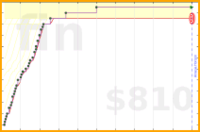Measuring the Impact of the Sharing Economy

Online marketplaces facilitating peer-to-peer exchange of goods and services have been flourishing. Last year half a million visitors to New York City used Airbnb to find a place to stay. Airbnb is an online marketplace that matches those looking for short-term accommodation with those that can provide it in their homes. So far, consumers have booked over 10 million nights through the service. The company, which collects a 10-15% fee for each booking, was most recently valued at $10bn, and it continues to grow fast. By some measures it is even overtaking well-known hotel brands. Airbnb’s CEO recently tweeted about one such accomplishment: “Marriott wants to add 30,000 rooms this year. We will add that in the next 2 weeks.”
Inspired by the rise of Airbnb, other entrepreneurs have followed suit to build online marketplaces that enable fee-based sharing of goods and services ranging from vehicles, to power tools, to even pets. Collectively these marketplaces have come to be known as the “sharing economy.”
Despite its mainstream acceptance, measuring the contribution of the sharing economy to overall economy activity has been a challenging task. Its proponents argue that the sharing economy is generating incremental economic gains, creating jobs, and stimulating spending. For example, in popular destinations like NYC where hotel occupancy rates exceed 80%, and room prices reflect this high demand, the sharing economy has provided a viable accommodation alternative for travelers on a budget. These travelers might not have been able to afford a trip to NYC otherwise. Moreover, these Airbnb-enabled trips generate additional income for NYC hosts who rent their places out, and contribute to local spending. A recent Airbnb-commissioned study found that “in one year, Airbnb generated 632 million dollars in economic activity in [New York City].”
So is everyone a winner in the sharing economy? John Byers, Davide Proserpio, and I found that not everyone is better off. We estimated the impact of Airbnb on the Texas hotel industry, and found that Airbnb is significantly changing travelers’ consumption patterns, who are substituting some hotel stays for Airbnb. Economy hotels, and those not catering to business travelers are so far the most impacted.
We focused on Texas for two reasons. First, we could get detailed revenue data for Texas hotels. The State of Texas publishes quarterly tax reports for individual hotels going back at least a decade. Second, Airbnb adoption is highly non-uniform across Texas municipalities. For example, while there are thousands of Airbnb properties in Austin, there are only a handful in Ft. Worth. We exploit this variation to isolate the impact of Airbnb from other forces driving hotel revenue.
Here’s how we go about it.
As a first step, consider a hypothetical Austin hotel with $1 million in revenue the year prior to Airbnb coming to Austin, and $800 thousand the year after. To measure Airbnb’s impact we could look at differences in hotel revenue before and after Airbnb became popular. This temporal comparison would suggest that the impact of Airbnb on hotel revenue is about 20%. But this analysis is problematic. It could be a pure coincidence that hotel revenue started declining as Airbnb became popular.
To solve this problem, we can use the revenue of hotels that were not affected by Airbnb as a benchmark. This is where variation in Airbnb popularity comes in handy. We can look for differences in hotel revenue between cities like Ft. Worth where Airbnb isn’t popular and cities like Austin where Airbnb has thrived over the same period of time. Then, if we find that revenue declined similarly for hotels in both cities, we cannot attribute these changes to Airbnb. To continue with our example, suppose a Ft. Worth hotel saw a 12% decline in revenue following Airbnb’s arrival in Austin. Then we need to adjust our estimate of the impact of Airbnb downwards from 20% down to 8%.
A key assumption of this analysis is that the revenue trends of Ft. Worth hotels are good indicators of what would have happened in Austin in the absence of Airbnb. What if this is not the case? Ideally, we’d also like to have a control group of hotels from the same city. We chose this control group to be hotels that cater to business travelers, regardless of how popular Airbnb is where they are located. Our rationale for this choice is that business hotels offer amenities, such as conference facilities and business centers, which are not typical (yet!) of Airbnb properties. Therefore their revenue should be less sensitive to competition by Airbnb.
“Airbnb has negatively impacted the revenue of lower-tier hotels by about 5%”
Now, we can take this sort of analysis — looking at differences in revenue trends across “treated” and control hotels — one step further. To continue with our example, suppose that a business hotel in Austin saw a 5% decline in revenue the year after Airbnb came to town. By our assumption that Airbnb does not affect business hotels, we cannot attribute this change to Airbnb. Previously, as a result of using Ft. Worth hotels as a control group, we had to revise our hypothetical estimate of Airbnb’s impact downwards from 20% to 8%. Now, because we use business hotels as an additional control group, we have to further scale down this estimate from 8% to 3%. In the end, our estimation methodology only attributes changes in hotel revenue to Airbnb if they are above and beyond changes in the revenue of hotels that should not have been affected.
To complete our analysis, we incorporated a number of observable variables that affect hotel demand, such as the unemployment rate. In the end, we estimated that in cities like Austin where Airbnb supply has doubled year over year, this growth has already negatively impacted the revenue of lower-tier hotels by about 5%. So, while the rapid growth of the sharing economy is great news for those with a spare room to rent, and for travelers looking for a place to stay (not to mention those looking for a cab in NYC on a rainy day), some hotel owners and workers aren’t any better off.
As with many things online, measuring the net value created by the sharing economy will be challenging. Our work highlights the need to weigh any positive change the sharing economy can bring about by generating new demand against various costs including the ones we considered here.
See our paper for details.
Illustration by Kelly Savage
